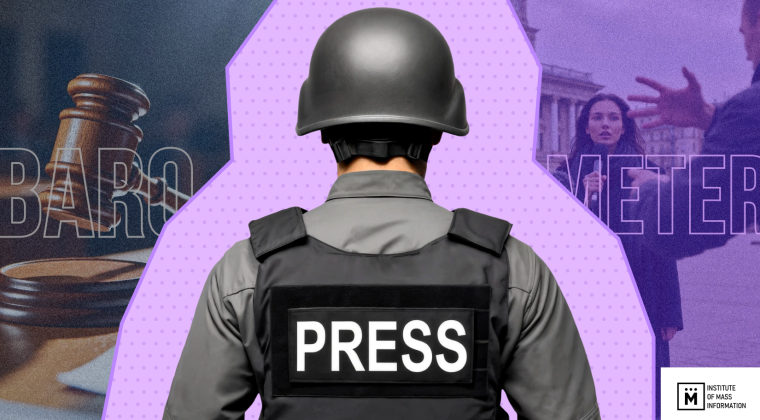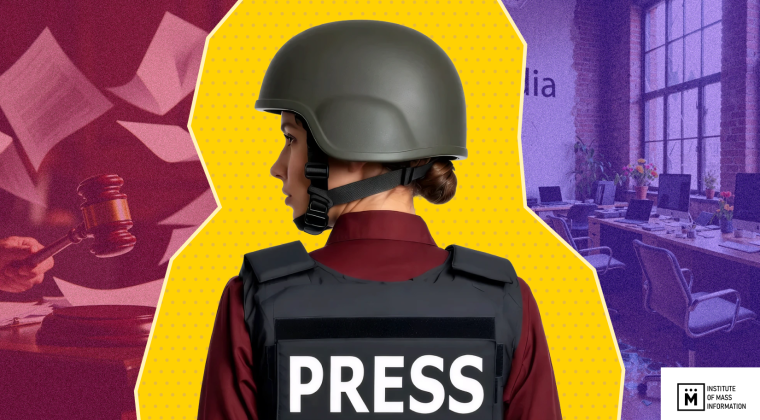42% of IMI media professionals polled admitted that there were precedents in their newsrooms when materials were not published or were taken down at the request of interested parties. At the same time, 47% of respondents stated that such thing was inexistent in their newsrooms, and another 11% said they were unaware of such cases.
These are the results of an anonymous targeted survey of journalists and editors conducted by the Institute of Mass Information on September 3-17, 2021 *. The poll was conducted by IMI after more than 30 Ukrainian media outlets took down the news item about an accident involving MP Trukhin (Servant of the People).
The most common reason for taking down of the story was the position of the editor-in-chief or media owner (29% of respondents). This indicates that the practice of taking down of news to order is quite common practice among the Ukrainian media. The second most common reason for deleting materials were errors (22% of respondents). In fact, if an error is made in the material, it should not be deleted, but corrected, and, in the headline and in the text of the news it should be clearly explained what exactly was the point. At the same time, high-quality foreign editors apologize to the audience and the heroes of the materials. Among other reasons for taking down of materials, respondents also mentioned money (14%) and threats, pressure or lawsuits (12%) **.
The study also found that 38% of the media outlets surveyed by IMI are used to place jeansa. At the same time, 57% of journalists surveyed said that their media did not place commissioned materials, and another 5% are unaware of it.
According to the results of the survey, the main customer of jeansa in the media was the local government (it was indicated by 25% of respondents), in second place it was local political forces (21%). These figures are to evidence the difficult economic condition of local media, which makes them dependent on the “support” of local authorities. Indirectly, this may indicate that the credibility of at least a quarter of local media coverage of local government and local politics may be questionable.
In third place among customers, according to the survey, were the central government (9% of respondents mentioned them). Survey participants named OP, various ministries and other government agencies among such customers. The fourth place among the customers was shared by the political forces “Batkivshchyna” and “European Solidarity”, each of which was indicated as customers by 7% of respondents. And another 2% fell on the “Servant of the People”. At the same time, 19% of respondents said that their media placed jeansa from all customers, not particularly understanding their ideology.
36% of respondents indicated that in their media there is a price for placing ordered materials of both commercial and political nature. On the positive side, 39% of journalists surveyed indicated that there was no such schedule of prices in their media. In another 7% of publications where respondents work, there is a schedule of prices only for commercial jeansa, and they do not place a political one. For 4% of respondents, the price-list exists only for advertising in the edition, and another 11% of respondents do not know whether there is such a schedule of prices or not. The survey found that in 3% of newsrooms where respondents work, jeansa is placed on a personal agreement with the owner or management of the media.
Regarding the influence of owners on media policy, 23% of respondents indicated that the owner influences both political and economic content. In another 13% of newsrooms where interviewed journalists work, the owner influences only political materials. At the same time, 56% of respondents indicated that they do not feel the influence of the owner on editorial policy, and 5% resist such influence. 3% of respondents-journalists could not answer the questions. These results confirm that the problems with the independence of editorial policy do exist in the Ukrainian media.
* The survey was conducted using an anonymous targeted online survey of journalists and editors using an interactive structured questionnaire. References to the questionnaire were sent to potential respondents: working journalists and editors. A total of 104 responses were received from media outlets, of which 92% were respondents from the regions of Ukraine, 8%were from the city of Kyiv, 52% women, 48% men The survey was conducted during September 3-17, 2021 .
This study was made possible by the support of the American people through the USAID Media Program in Ukraine project, implemented by the international organization Internews Network. The content is under the sole responsibility of the Institute for Mass Information and does not necessarily reflect the views of USAID, the US Government or the Internews Network.



